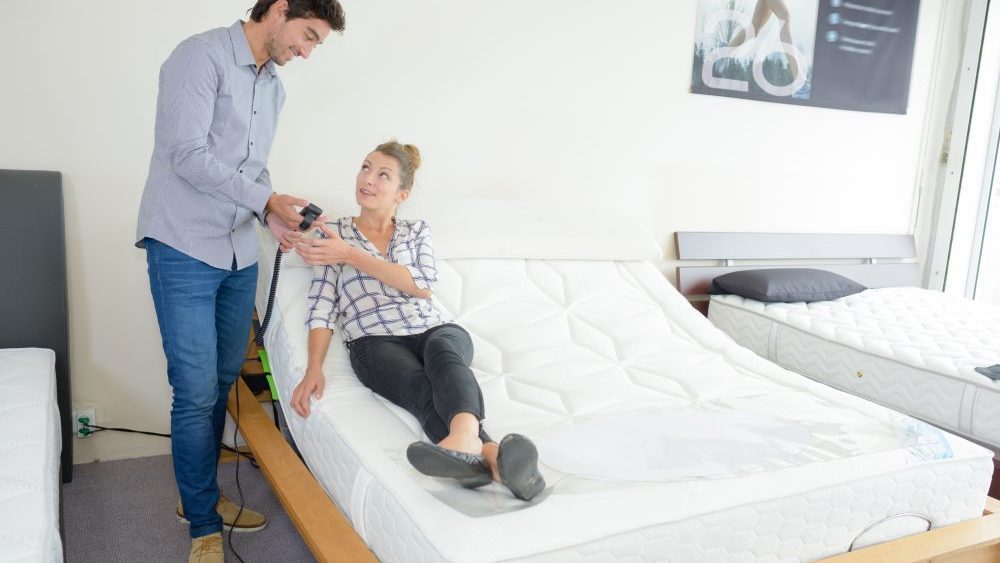The right mattress can make the difference between tossing and turning and getting a great night’s sleep. With so many new options available, selecting the best mattress can be overwhelming. Follow these tips and you’ll be sleeping soundly in no time.
Shop around. If you haven’t shopped for a mattress in a long while, allow the sales representatives enough time to provide an overview on each type of mattress, its strengths and weaknesses.
- Innerspring mattresses have steel springs covered by padding. The amount and type of padding depends on the model. They are widely available in many different firmness levels at varying price points. Compared to other, newer types of mattresses, innersprings don’t hold up as well.
- Memory foam mattresses are made of foam that conforms to sleepers’ bodies. While they are readily available and come in a variety of densities, memory foam mattresses tend to be firm. They also retain heat and can be hard to move around on.
- Newer latex mattresses utilize latex foam as their support system. They are similar to memory foam models, but they bounce back better. Though they tend to be more expensive than other types of foam mattresses, natural latex offers the added benefit of being resistant to dust mites and mold/bacterial growth.
- Hybrid mattresses offer the best of both worlds — the support of innerspring mattresses and the conforming benefits of memory foam or latex. But they come with a hefty price tag.
- Air mattresses contain air-filled inner chambers covered by foam padding and upholstery. These mattresses are highly customizable, but they can be expensive and noisy.
Set a budget. A mattress is a significant investment. Average prices for a queen mattress range from $700 to over $1,800, excluding the box spring, if necessary. While it may be tempting to go for the bargain, buy the best mattress you can afford. Be prepared to spend more than $1,000 for a good mattress, according to healthcare professionals and sleep experts. Think of it this way: What other piece of furniture do you use for 8 hours a day? More expensive models tend to last longer (8-10+ years), contain higher-quality materials, and have better warranties. If you find the perfect mattress and it’s over your budget, keep an eye out for sales events.
Determine how you sleep. Your preferred sleeping position and style will determine what kind of support and cushioning is best for you. Stomach sleepers do well with firmer mattresses such as high-density latex, firm innerspring, or an adjustable air bed. Sleep on your side? You’ll need more cushioning since your shoulders and hips are under a lot of pressure, so an innerspring with a soft pillow top or a hybrid model is a good option. If you are a back sleeper, most mattress types are appropriate. Look for a supportive mattress with cushioning that feels good.
Take a comfort test. The Better Sleep Council recommends trying out mattresses by lying on them in your normal sleep position. Spend at least 10 minutes on each option to get a good idea of the comfort and support offered. Partners should test mattresses together to determine if they suit both people. Once you determine which type mattress feels best, consider specific models of that type at a range of price points. Don’t hesitate to visit several mattress stores to find just the right mattress for you.


